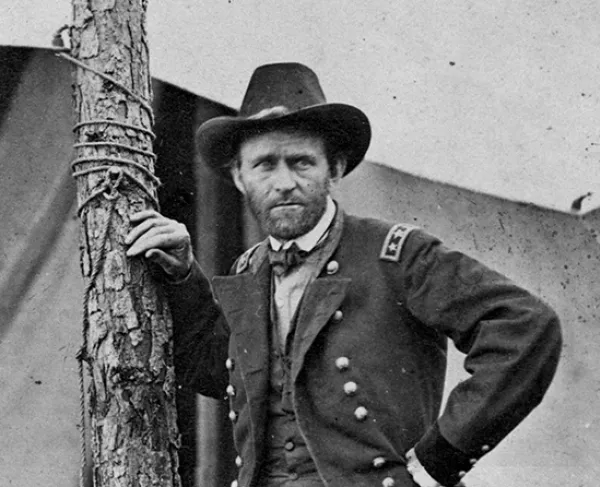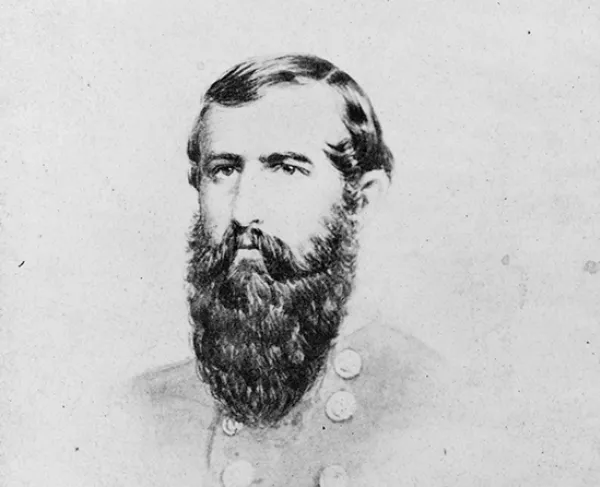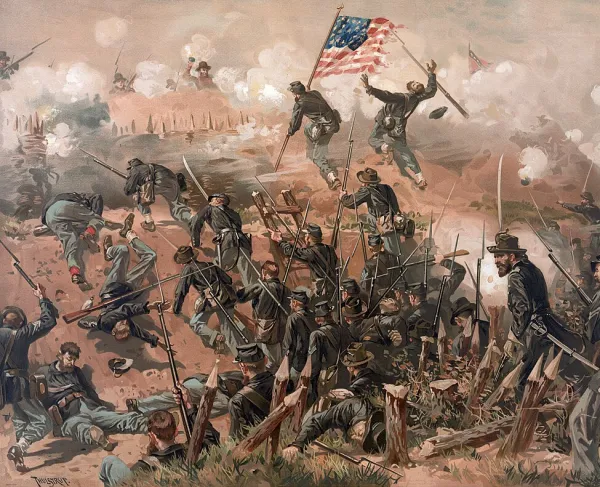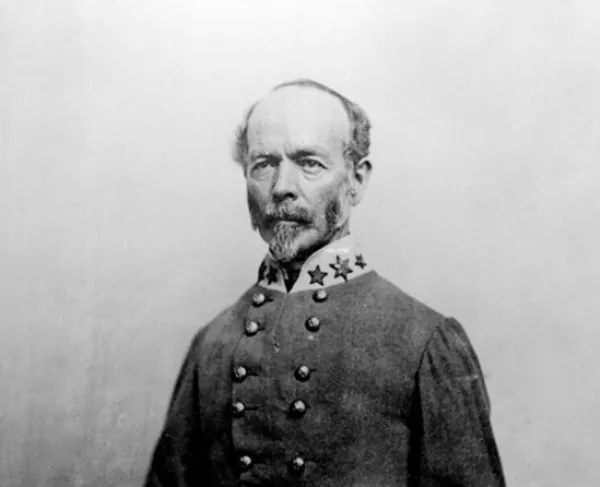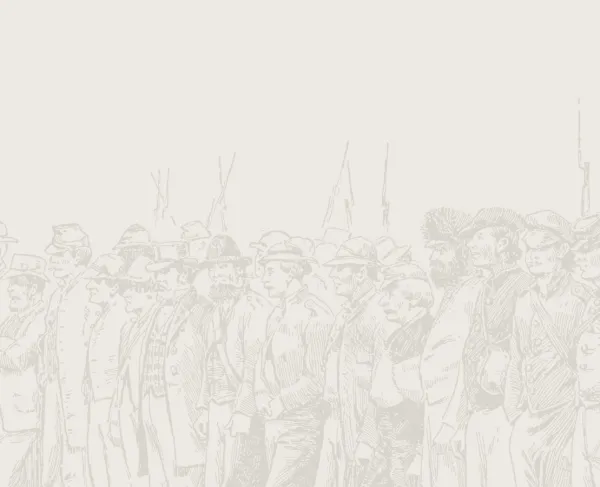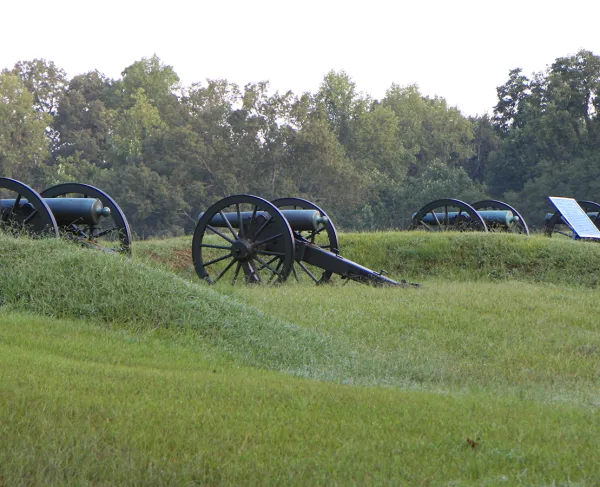
Vicksburg
Warren County, MS | May 18 - Jul 4, 1863
Vicksburg’s strategic location on the Mississippi River made it a critical win for both the Union and the Confederacy. The Confederate surrender there ensured Union control of the Mississippi River and cleaved the South in two.
How it ended
Union victory. After a 47-day siege, Lt. Gen. John C. Pemberton’s Confederate troops surrendered to Gen. Ulysses S. Grant. Together with the Union victory at Gettysburg just a day before, Vicksburg marked a turning point in the fortunes of the Union army.
In context
The Mississippi River was the primary conduit for supplies and communication through the south as well as a vital lifeline for goods going north. To Confederate President Jefferson Davis, Vicksburg was the "nailhead that holds the South's two halves together." President Abraham Lincoln remarked, “Vicksburg is the key! The war can never be brought to a close until that key is in our pocket.” The Vicksburg Campaign began in 1862 and ended with the Confederate surrender on July 4, 1863. With the loss of Confederate general John C. Pemberton’s army after the siege at Vicksburg and a Union victory at Port Hudson five days later, the Union controlled the entire Mississippi River and the Confederacy was split in half. Grant’s victory led to his continued command in eastern Tennessee and his eventual appointment as general-in-chief of the Union armies.
In the spring of 1863, Grant marches the Army of the Tennessee down the west side of the Mississippi River. The troops must rendezvous with the Union navy, which will provide transport for the river crossing into Confederate territory. On the evening of April 16, Rear Adm. David Dixon Porter sneaks his Union fleet past the Confederate batteries at Vicksburg to meet up with Grant. As the boats round De Soto Point, they are spotted by Confederate lookouts who spread the alarm. Although each vessel is hit by Confederate fire. Porter's fleet successfully fights its way past the Confederate batteries and meets up with Grant.
On April 29, Union troops attempt to cross the Mississippi at Grand Gulf. The Union fleet bombards Confederate defenses for five hours, but Grant’s troops are repulsed. Grant moves farther south in search of a more favorable crossing point and eventually finds one in Bruinsburg. In the early morning hours of April 30, infantrymen of the Twenty-fourth and Forty-sixth Indiana Regiments step ashore on Mississippi soil. The two sides clash at Port Gibson and Raymond. By May 14, the state capital of Jackson, Mississippi, is in Union hands. On May 16, Grant encounters Pemberton’s army and they exchange fire at Champion Hill. They clash again on May 17 at the Big Black River. Both battles result in Union victories and force the Confederates to retreat to their fortifications at Vicksburg with the Federals in hot pursuit.
May 18. Looking for a quick victory and not wanting to give Pemberton time to settle his garrison, Grant orders an immediate assault. Of his three corps, only Maj. Gen William T. Sherman’s Fifteenth Corps, stationed northeast of the city, is in a position to attack.
May 19. Sherman’s assault focuses on the Stockade Redan, named for a log stockade wall across the Graveyard Road connecting two gun positions. Here, the Twenty-seventh Louisiana Infantry, reinforced by Col. Francis Cockrell’s Missouri Brigade, mans the rifle pits. Sherman’s men move forward down the road at 2 p.m. and are immediately slowed by the ravines and obstructions in front of the redan. The combat is fierce and bloody outside the Confederate works. The Thirteenth United States Infantry plants its colors on the redan but can advance no further. Sherman’s men pull back. Undaunted by this failure, Grant makes a more thorough reconnaissance of the defenses prior to ordering another assault.
May 22. Early in the morning, Union artillery opens fire and for four hours bombards the city's defenses. At 10 a.m. the guns fall silent and Union infantry advances on a three-mile front. Sherman attacks again down the Graveyard Road, Maj. Gen. James B. McPherson’s Corps move against the center along the Jackson Road, and Maj. Gen. John A. McClernand’s Corps attack to the south at the Second Texas Lunette and the Railroad Redoubt, where the Southern Railroad crosses the Confederate lines. Surrounded by a ditch 10 feet deep and walls 20 feet high, the redoubt offers enfilading fire for rifles and artillery. After intense hand-to-hand fighting, Federals breach the Railroad Redoubt, capturing a handful of prisoners. The victory, however, is the only Confederate position captured that day.
Grant’s unsuccessful attacks give him no choice but to invest Vicksburg in a siege. As weeks go by, Pemberton’s defenders suffer from shortened rations, exposure to the elements, and constant bombardment from Grant’s army and navy gunboats. Reduced in number by sickness and casualties, the garrison of Vicksburg is spread dangerously thin. Civilians are hard hit, with many forced to live in crudely dug caves due to the heavy shelling.
June 25. Following Grant’s orders to dig tunnels and set explosives under the Confederate works, Union sappers detonate a mine with 2,200 pounds of black powder, causing a huge explosion. After more than 20 hours of hand-to-hand fighting in the 12-foot deep crater left by the blast, Union regiments are unable to advance and withdraw back to their lines. The siege continues.
July 3–4. With the situation dire for the Confederates, Grant and Pemberton meet between their lines. Grant insists on an unconditional surrender, but Pemberton refuses. Later that night Grant reconsiders and offers to parole the Confederate defenders. On July 4, the 47-day siege of Vicksburg is over.
4,910
32,363
At 10:00 a.m. on Independence Day, some 29,000 Confederates march out of their lines, stack their rifles, and furl their flags. With Vicksburg in Union hands and the Mississippi in their control, Lincoln has great cause for optimism. On July 7, 1863, three days after the fall of Vicksburg and four after a victory at Gettysburg, the president writes to his General-in-Chief: “Major Genl Halleck: We have certain information that Vicksburg surrendered to General Grant on the 4th of July. Now, if Gen. Meade can complete his work so gloriously prosecuted thus far, by the litteral(sic) or substantial destruction of Lee's army, the rebellion will be over. Yours truly, A. LINCOLN”
Unfortunately, Lee’s army escapes Meade’s clutches on July 14 and crosses the Potomac River at Williamsport, Maryland, into Virginia. At a low point, a dispirited Lincoln sits down and writes to Meade “… my dear general, I do not believe you appreciate the magnitude of the misfortune involved in Lee's escape. He was within your easy grasp, and to have closed upon him would, in connection with our other late successes, have ended the war….” Lincoln never sends this angry message to his general, and the Civil War drags on.
For 47 days, the people of Vicksburg were in constant danger. After Pemberton’s surrender on July 4, Grant rode into Vicksburg and discovered that many of the city’s fearful residents had created cavern-like shelters to shield them from the unrelenting bombardment of Union artillery:
…I found that many of the citizens had been living under ground. The ridges upon which Vicksburg is built, and those back to the Big Black, are composed of a deep yellow clay of great tenacity. Where roads and streets are cut through perpendicular banks are left and stand as well as if composed of stone. The magazines of the enemy were made by running passage-ways into this clay at places where there are deep cuts. Many citizens secured places of safety for their families by carving rooms in these embankments…. Some of these were carpeted and furnished with considerable elaboration. In these the occupants were fully secure from the shells of the navy, which were dropped into the city night and day without interruption.
As the siege went from days to weeks—to more than a month—food became scarce. Confederate soldiers had seized most of the community’s meat and vegetables, and citizens resorted to slaughtering mules and cats for nutrition. The Vicksburg Daily Citizen reported on the lack of necessities and posted notices of civilian illnesses, casualties, and deaths. The paper—like the residents—learned to improvise in hard times. With no newsprint left in stock, it printed its editions on pieces of cut-up wallpaper.
One of Grant’s greatest challenges during the Vicksburg campaign was finding safe passage across the Mississippi River without being cut down by Confederate gunfire. He tried to cross his troops at De Soto Point, Lake Providence, Yazoo Pass, and Steele’s Bayou with no luck. Then he came up with an ambitious plan to use the navy to provide transports for the river crossing. Success hinged on getting boats safely past the Confederate guns at Vicksburg and seizing control of the river south of the city. Rear Adm. David Dixon Porter, who commanded the Mississippi Squadron, would mastermind the running of gunboats downriver, then later running a fleet of transports past the bluffs at Vicksburg.
On April 16, 1863, Porter ordered seven ironclad boats, one armed ram, three army transports, and a tug to start downriver past Vicksburg. Porter urged his men to take "every precaution possible to protect the hull and machinery" of their ships. To shield against shellfire, each vessel had its port side, which would face the Vicksburg guns in passage, piled high with bales of cotton, hay, and grain. Coal barges were lashed alongside as an additional defense. The fleet would keep all lights extinguished, even when returning fire, and of course, make as little noise as possible. The ships departed anchorage at 9:15 p.m. and first came under fire from the city at about 11:15, with the Union gunboats returning fire eight minutes later. There was no moon that night, forcing the Confederates to light bonfires alongside the bank to guide their guns, but it was not enough—of 525 rounds fired, only 68 hit Porter’s fleet. One of the three transports sunk. The gunboats sailed through. Through this daring engagement, Grant was able to secure transports to cross the river. His landing of 17,000 soldiers was the largest amphibious operation in United States military history until the invasion of Normandy during World War II. Porter’s navy continued to support Grant’s men during the siege, providing cover from Confederate fire and ferrying food and supplies to soldiers entrenched at Vicksburg.
Vicksburg: Featured Resources
All battles of the Grant's Operations Against Vicksburg Campaign
Related Battles
77,000
33,000
4,910
32,363
